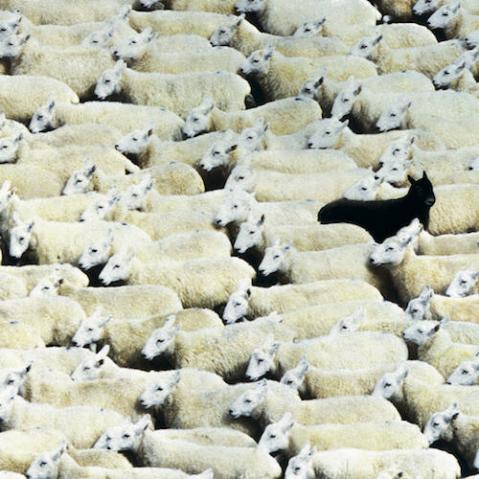Relating foreground to background in your landscapes
The inclusion of foreground elements within landscape photographs adds a sense of depth and scale to what would otherwise be a two-dimensional, or flat, image.

However, it seems to have become de rigeur among many landscape photographers to include foreground elements on an almost ad hoc basis, without considering why they are being included and what they bring to the image, in terms of providing mood or narrative. Including foreground elements is an essential technique for creating dimension within images, but if these elements are at odds with the rest of the image—particularly the background—the final result is likely to appear confused and cluttered, and will detract from the overall impact.
Conversely, choosing appropriate foreground matter can add impact and strength to the photographer’s intended interpretation or message, and introduce a narrative to the image. Consider a mountain stream with prominent boulders in the foreground, perhaps a slow shutter speed has captured the trails of water as it flows around the rocks. The stream snakes away from the viewer leading them further into the middle distance of the image, and finally on toward the towering, snow-capped mountains in the distance.
It is not difficult to imagine why this image works, both on a technical and an interpretive level.
From a technical perspective, the foreground creates a sense of three dimensions (on a two-dimensional media), as the foreground rocks give way to the meandering stream in the middle distance and, in turn, the distant mountains. In effect, it creates three planes of interest within the scene. Just as importantly, however, it allows the viewer to imagine the icy waters of the stream and in their mind’s eye trace them back to the source of the water as pristine melting snowfall on the peaks of the distant mountains. By simply considering the relationship between the foreground and background elements, we have created a narrative that can be interpreted by the viewer, in different ways (is it about the seasons?). In doing so, it is far more likely that the viewer will linger a little longer on the image to consider its meaning, which, when faced with the sheer volume of landscape images available online today, can only be a good thing.

The possibilities, of course, are dictated by the location, but the approach should always be the same. For example, a hay bail in the foreground that leads the eye towards a patchwork mosaic of cultivated fields in the distance might hint at humankind’s impact on the environment. Likewise, a smooth boulder on a beach, polished by the gentle washing of the sea over eons might be placed against an eroded cliff or promontory in the background, suggesting numerous themes such as erosion, the passage of time, the age of the Earth, and so on. Conversely, it may be something altogether more simple that just works on a visual, graphic level. For example, an unusual cloud formation in the distance that complements—or juxtaposes—the textures and patterns in the sand of a beach recently washed clean by the tide.
Of course, juxtaposition of foreground and background elements might also be the intention. For example, the photographer may wish to highlight an ambiguity, make a statement, or create tension—imagine a pile of litter or rubbish in the foreground within an otherwise pristine national park.
Quite simply, foreground elements when used appropriately can aid the photographer in creating an intended interpretation, narrative or message, and create images with more interest and impact. Including foreground elements requires just as much consideration by the photographer as choosing location, composition, mood, and so on. Consider why each element is included, what their relationship is with each other, and what influence they will have on the final mood, message or narrative of the image.
Essential reading material for an irresistible subject, Photo School: Landscape, by Michael Freeman and Gary Eastwood is packed with stunning landscape from around the world and full of tips an techniques to improve your photography. Get motivated by numerous and specific shooting challenges, and be inspired by sample work from fellow photography students, with critical evaluations of the results to improve your understanding of the core concepts.
 Photo School: Landscape
Photo School: Landscape
Michael Freeman and Gary Eastwood
Buy it now!
RRP for print edition: £17.99



